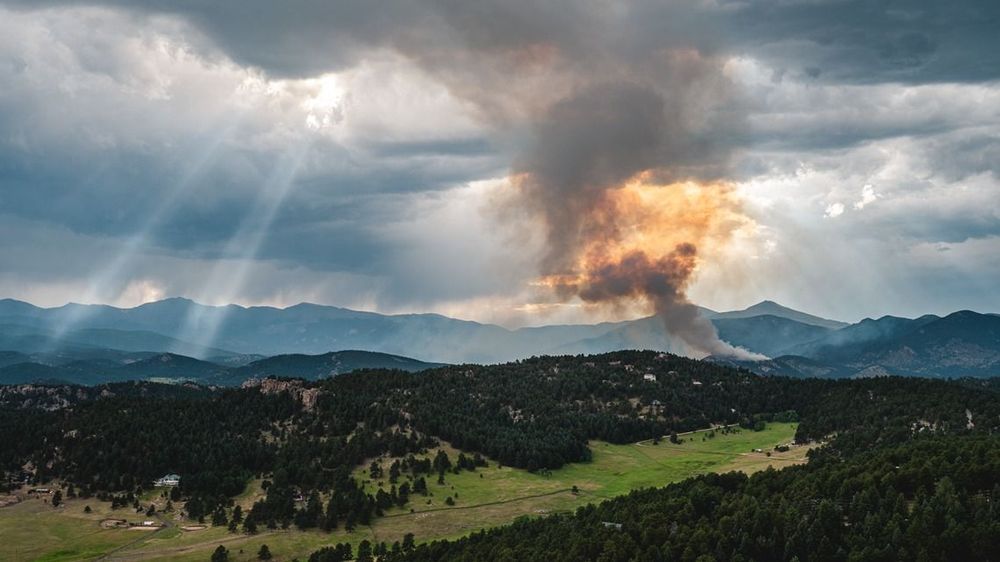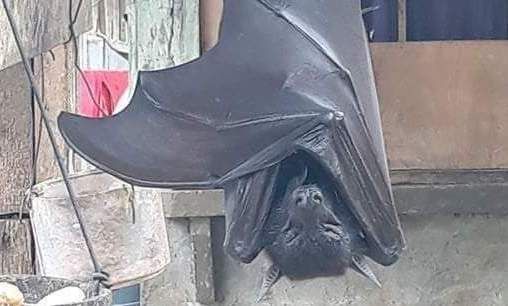The Elephant Butte Fire was reported off Upper Bear Creek Road near Evergreen the afternoon of 7/13/20, and up to 1,000 homes received evacuation notices.



Circa 2019
The European Space Agency (ESA) study is investigating how practical constructing a manned base on the moon only using 3D printing technology could be, given that it would rely primarily on lunar dirt for building materials.
“Terrestrial 3D printing technology has produced entire structures,” Laurent Pambaguian, who heads the project for ESA, said in a statement. “Our industrial team investigated if it could similarly be employed to build a lunar habitat.”
A new approach to designing motion plans for multiple robots grows “trees” in the search space to solve complex problems in a fraction of the time.
In one of the more memorable scenes from the 2002 blockbuster film Minority Report, Tom Cruise is forced to hide from a swarm of spider-like robots scouring a towering apartment complex. While most viewers are likely transfixed by the small, agile bloodhound replacements, a computer engineer might marvel instead at their elegant control system.
In a building several stories tall with numerous rooms, hundreds of obstacles and thousands of places to inspect, the several dozen robots move as one cohesive unit. They spread out in a search pattern to thoroughly check the entire building while simultaneously splitting tasks so as to not waste time doubling back on their own paths or re-checking places other robots have already visited.
A decade before Spaceballs, Winnebago thought about making RVs fly.

Supergenes Play a Larger Role in Evolution Than Previously Thought
Massive blocks of genes—inherited together ‘plug and play’ style—may play a larger role in evolutionary adaption than previously thought, according to new research in Nature.
Biologists identified 37 of these so-called ‘supergenes’ in wild sunflower populations, and found they govern the modular transfer of a large range of traits important for adaptation to local habitats. Those include seed size, timing of flowering, as well as the ability to withstand environmental stresses such as drought or limited nutrient availability, among many others.


North Korea has blown up a joint liaison office used for talks between itself and South Korea, the latest sign that ties between the two longtime adversaries are rapidly deteriorating.
North Korean state media reported that the four-story building, which is located in the town of Kaesong just north of the demilitarized zone that divides the two Koreas, was “completely destroyed by a ” terrific explosion” at 2:50 p.m. local time.
A plume of black smoke rising above the site was visible from the South Korean side of the border shortly after.

An old photo of a human-sized bat in the Philippines has resurfaced on Twitter, puzzling social media users.
On June 24, a Twitter user with the handle @AlexJoestar622 shared an image of a giant golden-crowned flying fox hanging from a wire attached to the roof of a building.
“Remember when I told y’all about the Philippines having human-sized bats?” the user asked. “Yeah, this was what I was talking about.”

There’s quite a bit of buzz these days about how humanity could become a “multiplanetary” species. This is understandable, considering that space agencies and aerospace companies from around the world are planning on conducting missions to low earth orbit (LEO), the moon, and Mars in the coming years, not to mention establishing a permanent human presence there and beyond.
To do this, humanity needs to develop the necessary strategies for sustainable living in hostile environments and enclosed spaces. To prepare humans for this kind of experience, groups like Habitat Marte (Mars Habitat) and others are dedicated to conducting simulated missions in analog environments. The lessons learned will not only prepare people to live and work in space but foster ideas for sustainable living here on Earth.
Habitat Marte was founded in 2017 by Julio Francisco Dantas de Rezende, the professor of sustainability in the Department of Product Engineering at the Federal University of Rio Grande do Norte (UFRN) and the director of innovation with the Research Support Foundation (FAPERN). He is also the coordinator of Habitat Marte and Mars Society Brazil.

A team of researchers simulated conditions on water-rich exoplanets in the laboratory and learned something surprising about their geological composition.
Out beyond our solar system, visible only as the smallest dot in space with even the most powerful telescopes, other worlds exist. Many of these worlds, astronomers have discovered, may be much larger than Earth and completely covered in water — basically ocean planets with no protruding land masses. What kind of life could develop on such a world? Could a habitat like this even support life?
A team of researchers led by Arizona State University (ASU) recently set out to investigate those questions. And since they couldn’t travel to distant exoplanets to take samples, they decided to recreate the conditions of those water worlds in the laboratory. In this case, that laboratory was the Advanced Photon Source (APS), a U.S. Department of Energy (DOE) Office of Science User Facility at the DOEs Argonne National Laboratory.